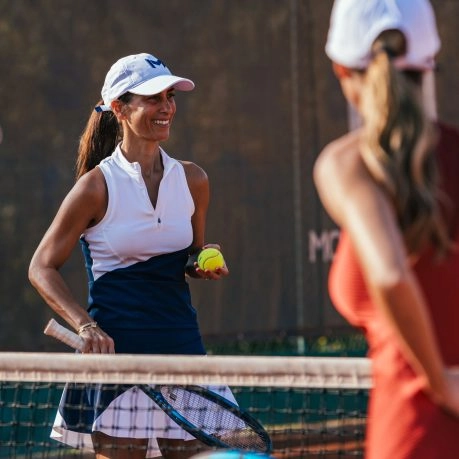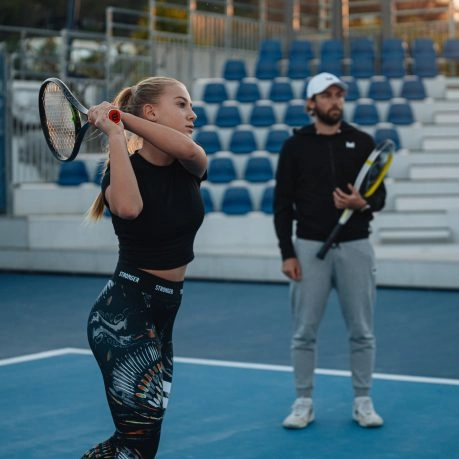
The importance of posture and support
Before concentrating on stroke technique, it is essential to understand the importance of posture and support. A good stance allows you to be balanced and reactive:
- Keep moving : Tennis is a dynamic sport. It’s crucial to keep your feet light and flexible so you can react quickly to every ball.
- Leg position : Adopt a slightly bent position with your legs shoulder-width apart for greater stability.
- Foot movement : Use adjustment steps before each shot so you’re always in the right position to hit the ball.



























